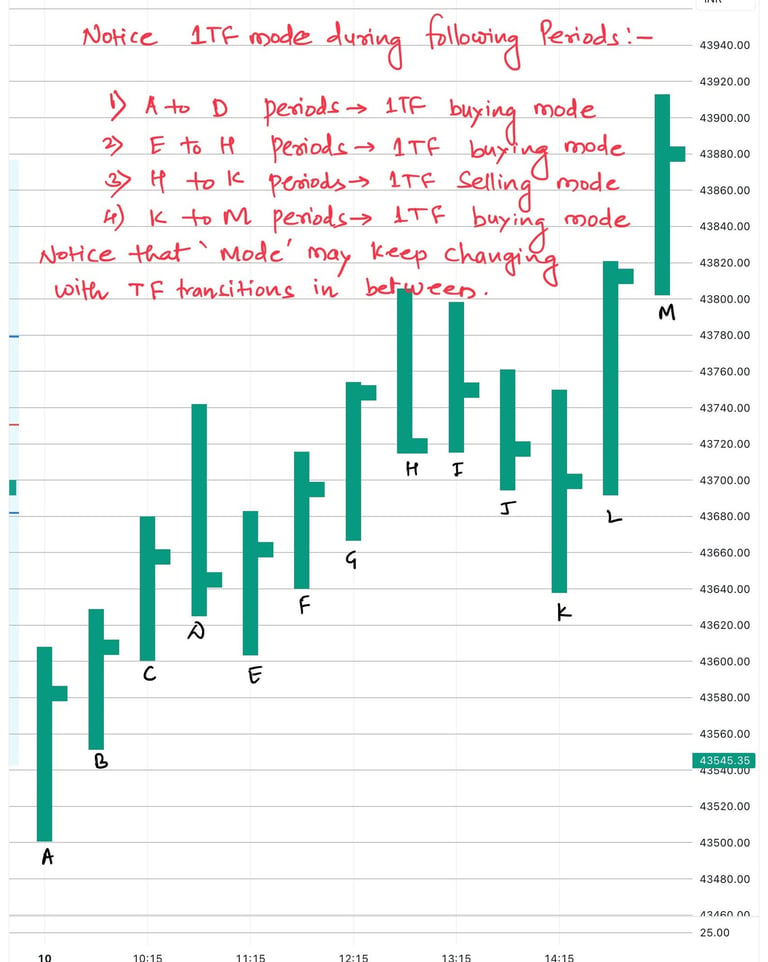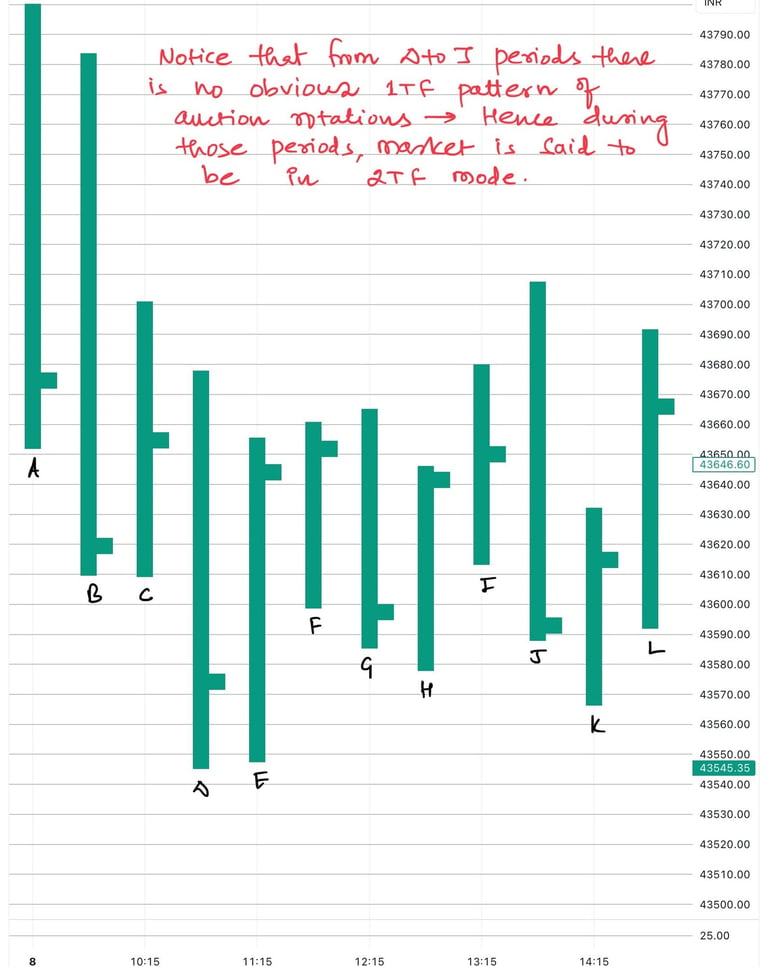Periods
Periods doesn't only mean assigning letters to the chart; it definitely has many nuances to learn.
11/19/20233 min read
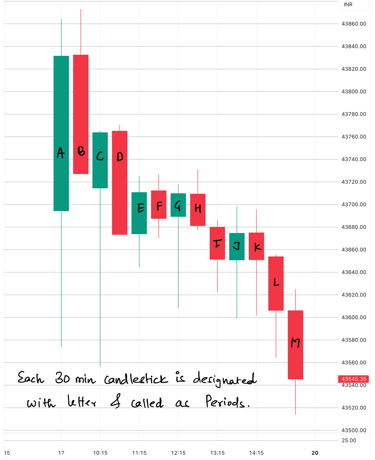

Price range of each 30 min bar or candlestick is designated with a letter & called as Period. Since Indian market opens at 9:30 AM and closes at 3:30 PM; there are total 13 Periods. We assign an alphabet to each of these consecutive 30-minute market activity starting from periods- A to M. Note that M period (i.e., from 3:15 to 3:30 pm) has only 15 min of market activity & it is also called as Closing period. The market activity occurring over consecutive 30 min Periods, is known as ‘auction rotations.’
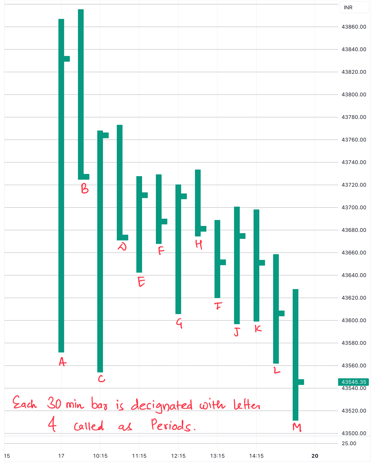

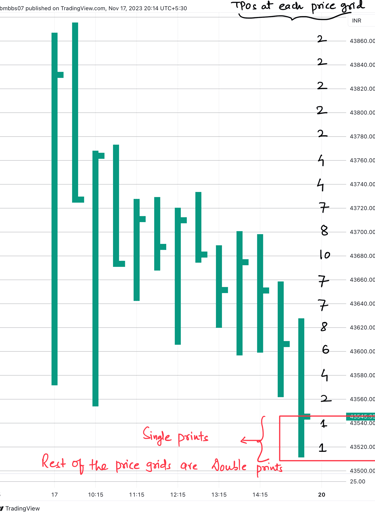

Each period has its High & Low. Days extremes can be placed in any period; however more often at least one of the extreme (either High or Low) for the day is formed during Initial balance i.e., Periods- A & B. If one is trained to identify such kind of extreme early after market opening, just imagine its potential. It will be easy to place trades in the direction of price moving away from such extreme.
The price range in different periods may overlap with each other (not necessarily in consecutive periods); thus, chart profile has certain price grids which are traded in more than one Period hence has more than one TPOs; and some other price grids which are traded only during single Period, hence have single TPO. The price grids having more than one TPOs are called ‘Double’ prints (whether overlap in two or more periods) and price grids with only single TPO are called as ‘Single’ prints.
Now, let’s look at the arrangement patterns of Periods or 30 min bars or candlesticks by introducing the concept of ‘mode of auction rotations’ in consecutive Periods. There are two types of such modes-
1. One-Timeframe (1TF) mode- During a one-timeframe buying mode, each time period i.e., 30 min bar or candlestick will auction to a higher (or equal) price level without auctioning below the previous time period’s lows. Conversely, in a one-timeframe selling mode, each additional time period will equal or extend below previous periods low without auctioning above the previous period’s highs.
2. Two- Timeframe (2TF) mode- it simply means lack of above pattern or mode.
It should be very clear to you that 1TF mode suggests market conviction & OTP control; while 2TF mode means either lack of OTP control or shared control. Let me briefly introduce here, the concept of Timeframe Transition (TFT); it simply means change in the mode of auction rotations during a day's market activity. Not only the transition matters, but also what matters is the way it occurs- i.e., the tempo of transition, whether it occurs quickly or with a great fight. Imagine this like a contest of tug of war between market players.
